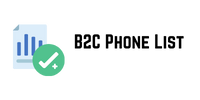When you spend money on pay-per-click (PPC) advertising, you want to get the best return on investment (ROI). So you’re probably evaluating which platform is best for getting started with online advertising.
If you’ve already run ads on one of the platforms and haven’t seen results, it may be because you haven’t targeted your ads correctly or set them up in a way that encourages your target audience to take a specific action.
Using these advertising platforms seems simple enough at first glance, but there is actually a big learning curve. And that is a big reason why companies hire a PPC expert to help them with this. Learn more about digital advertising and how to choose between Google Ads and Facebook Ads.
Google Ads or Facebook Ads for digital advertising
Generally speaking, Google ads are a great choice for products and services that your target audience is actively searching for. For example, home services perform well on Google because people often search for handyman, roofing contractor, etc.
Facebook ads are great for promoting products that your target audience isn’t actively looking for. But seeing your ad may pique their curiosity and suddenly make them wonder if they need the product. For example, consumer electronics or home goods are products that a consumer might not necessarily need right now, but might consider buying after seeing an ad.
Let’s take a closer look at each platform to better understand how to best use them depending on your circumstances.
Google Ads
Average cost per click: $1-$2
User Intent: Users are actively searching for answers to questions and products or services to purchase. They may have a specific brand in mind or are looking for general information about their needs.
Audience Targeting: You can target Google audiences based on the following parameters.
- Demography
- Geography
- Search queries
- Ad Types: Call Only, Text Ads, Shopping Ads
Average click through rate: 2%
Average Conversion Rate: 3.48%
When to Use Google Ads: Increase sales of phone number list products and services that customers are actively searching for. Concise ad copy is important and helps reach these passionate searchers who match your target audience. Quickly asking your business for more information will help the customer find you and contact you quickly.
Facebook Ads
Average cost per click: $.97
User Goals: Users passively scroll through posts from friends, family, and coworkers for entertainment. But they may be ready to learn more about a product, service, or brand that offers something that meets their needs.
Audience Targeting: Targeting options here are uae b2b list generally broader than Google’s. You can target Facebook audiences based on:
- Demography
- Interests
- Geography
- Life events
Ad Types: Image, Carousel, Video, Slideshow, Collection
Average click through rate: .89%
Average conversion rate: 9-10%
When to Use Facebook Ads: Raising awareness of products and services that your target audience may or may not need. Viewers have likely never heard of your product or service, or if they have, they may not be thinking about buying it. Ads allow you to present your product or service in an attractive way using interesting images, videos, and other visuals.
How do Facebook Ads and Google Ads work?
Now that you have a good understanding of how each platform is used, learn more about how each works. In short, Facebook Ads target users based on what they have shared about themselves on the platform and the types of content they historically enjoy viewing. Google Ads target users based on the target keywords they type into a search engine.
How does Facebook advertising work?
Facebook is a social media platform. Facebook has 2.9 billion users . When you run ads, you reach out to your target audience based on their interests, demographics, and other pages or types of content the user has interacted with.
When creating an ad, you will have the opportunity to choose the advertising budget, the ad placement and the duration of its work.
The main benefit of Facebook Ads is that you are reaching an audience that doesn’t yet know about your product or doesn’t know they need it. maximize your sales: email marketing strategies for 2024 This passive advertising works well for non-essential products.
But the biggest challenge in running effective Facebook ad campaigns is getting your targeting right. While you have a lot of options, figuring out which one is best can be tricky.
However, with the right audience targeting, conversion rates can be quite high, even though Facebook ad viewers don’t have the same purchasing intent as Google ad viewers.
